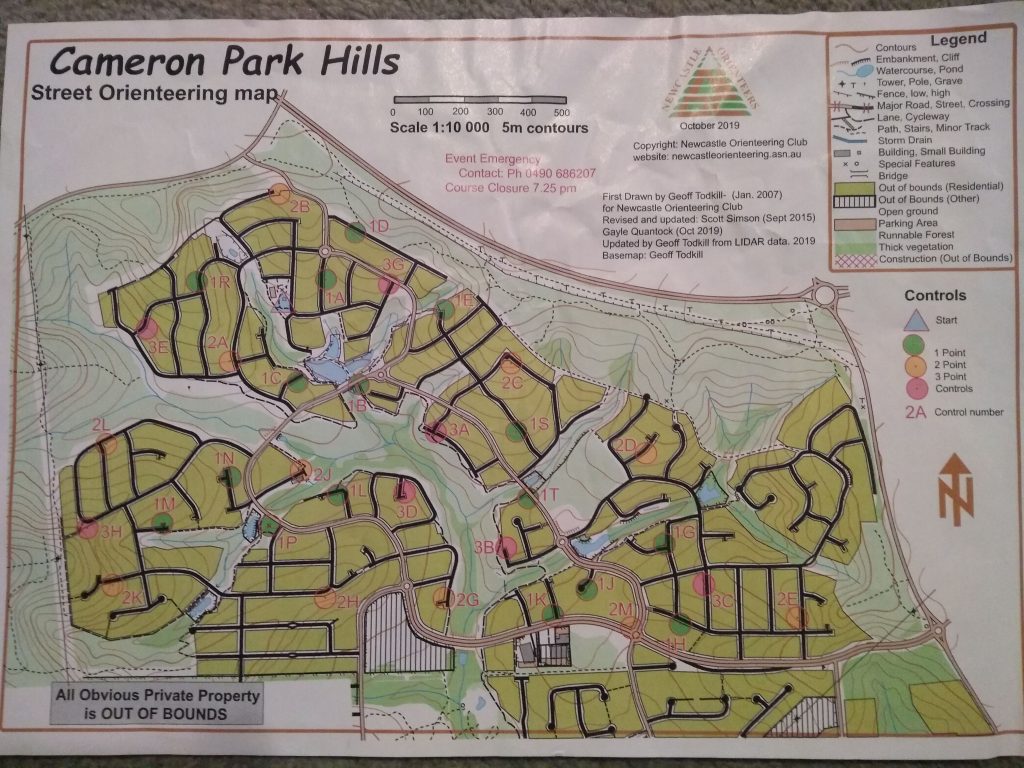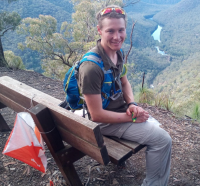
A key ingredient to rogaining (in addition to the navigation, teamwork, and route planning) is pushing through the long duration of the event. Excluding multi-day events such as the Tour de France or Test Cricket, a 24-hour rogaine is one of the longest continuous “official” sporting events.
But even the deepest rogaining tragics couldn’t hope to compete in a 24hr rogaine every week and simultaneously hold down a job, have some sort of family life, and keep their body physically intact. So what better way to keep up the routine of route planning, navigation and keeping fit on a weekly basis than a solo, super-sped-up version of a championship rogaine?
NSW is fortunate enough to have these Solo Super-Sped-up rogaines run by our various orienteering clubs. Despite the supposed rivalry between orienteers and rogainers, these events have long been popular amongst both the orienteering and rogaining crew, and for good reason. I did my first score orienteering in 2013 after a couple of years of serious rogaining and was immediately hooked.
As the summer orienteering starts kicking off around the State I had the privilege of having Ross Barr and Samantha Howe, coordinators of the best known midweek “Score-O” events in NSW, answer questions about the Sydney Summer Series (SSS) and Newcastle Summer Street Series (NSS) and explain why it’s such a great thing for rogaining regulars of all persuasions to give it a crack. Thanks to Sam and Rosscoe for their responses.
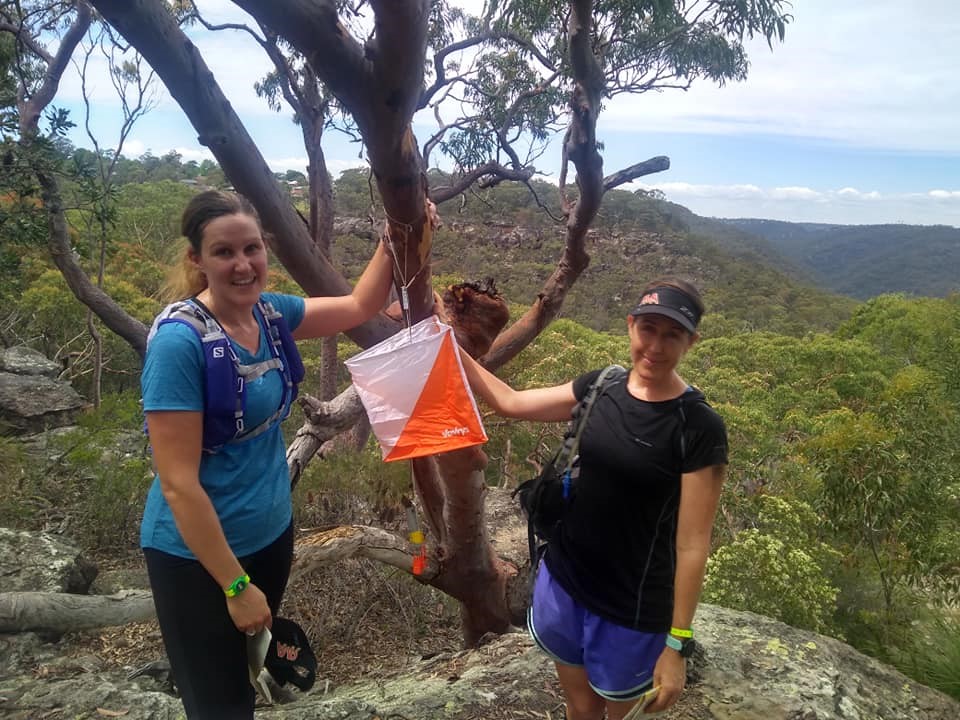
Tristan White: How did you get into orienteering/rogaining in the first place?
Ross Barr: I was leading NPA day walks back in the early 1980s and my bushwalking friend, the late Bill Maclean from Garingal Orienteering, was a regular who used to urge me to give O a go. “You love the bush, you love maps…” But I didn’t think I had that competitive bit or wanted to run… How wrong this proved when I did eventually give it a go (at Macquarie Uni in 1987)! I was instantly hooked. I did my first rogaine a couple of years later – a Paddy Pallin I think.
Samantha Howe: I got into Orienteering and Rogaining through friends in the Newcastle Uni Mountaineering Club and was immediately hooked. I started helping by setting occasional street events and am now the Street Series Coordinator and I regularly set different events.
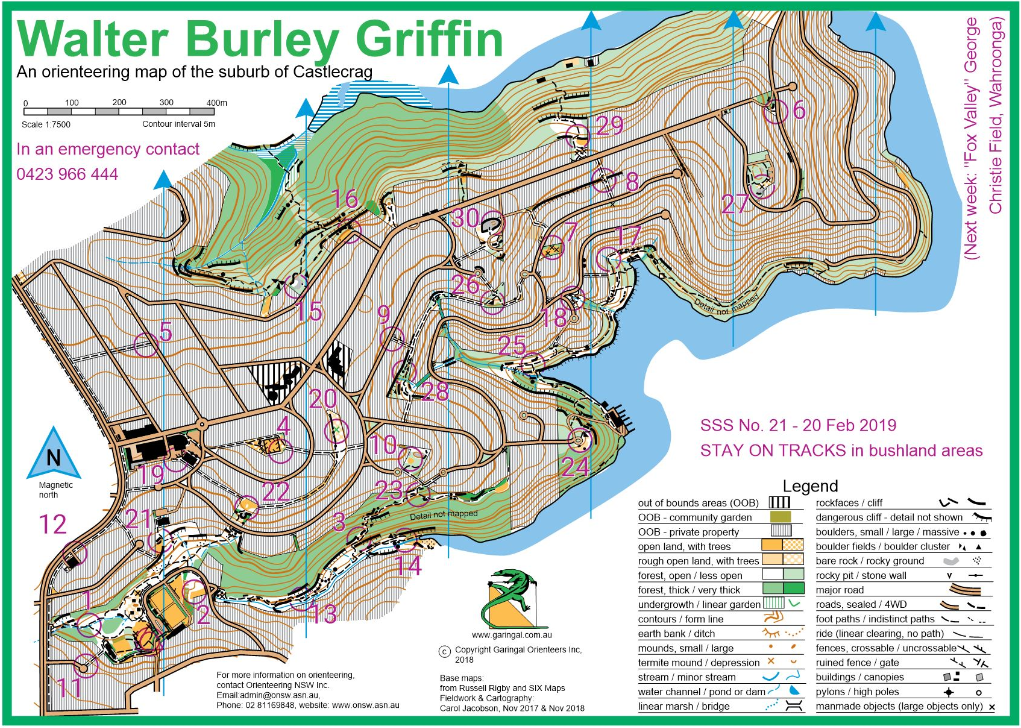
TW: Give a summary of how the series works.
RB: Each SSS course is 45 minutes in length, with controls numbered 1-30 on the map; 1-10 being ten points, 11-20 twenty, and 21-30 thirty; hence a total of 600 available points. The controls are generally in relatively easy locations, such as track junctions or fence corners; with a flag and electronic punch (SportIdent Unit) hanging at it. Competitors generally run (or walk) solo though we do permit team entries as well. Like a conventional rogaine, 10 points are lost per minute late, and generally the course is set so that the best runner collects almost (but not quite) all 600 points, and there is no obvious route so athletes are rewarded for clever route planning. There are 26 events this year, coinciding with each Wednesday of Daylight Savings.
Runners can usually collect maps from 4pm (though that’s changed somewhat with Covid) and start between 4:30pm and 6:45pm. The course closes at 7:30pm at which stage controls begin to be collected.
SH: NSS has always been a 45-minute score course with two minutes of map-reading time before starting. Maps are A4 size at 1:10,000. NSS used to have a multiple-choice question at each control (eg. #93 Colour of Letterbox: Red / White / Green) which were marked at the finish to give your score. Controls were worth 1, 2 or 3 points with 1 point lost for each minute late up to 5mins, then 2 points per minute up to 10mins late before disqualification at 55mins. Now we are changing over to MapRun which uses GPS on your smartphone or Garmin watch to beep and register each control as you reach it, then uploading your score at the finish. Controls will now be worth 30, 40, 60 or 90 points (changing due to MapRun control number limitations) with 30 points lost per minute late. A competitor’s best 10 results count towards their series total. Toblerones are awarded to any competitors who come to every event in the series and there are usually 5-20 people each season who manage this. Andrew Haigh seems particularly partial to Toblerone as he has the best record of attendance in the last ten or so years.
Starts are from 5pm – 6:30pm with course closure at 7:30pm.
TW: When and why did the Summer Series start?
RB: SSS began as something to keep you in touch over the summer when we had a hiatus from other events. Early years had various formats, but in 1991 we settled for the ‘Mini- Rogaine’ 45-minute score course we now have. The locations are slightly North Shore/Northern Beaches/Inner West Sydney centric, but we do cover quite a wide area.* This season includes Auburn and Earlwood for instance. Garingal Orienteers (my club) began it all, and we still do roughly half the 26 events each year. The other four Sydney-based clubs (Bennelong, Western & Hills, Uringa and Bigfoot) share the balance, with my role balancing the competing areas and dates – always a challenge! We get an average 200 attendees for each event, and a very much rusted on demographic. Our web site (about to be updated with the new branding from dirtyd) shows the programme, captures results and news. The latter usually being my cryptic race reports** – that I’m sure no one reads!
(*) There are now similar South and West Sydney Summer Series’ with a similar format, however less regular and held on weekends
(**) They really are cryptic. Each week Ross invents an original theme that somehow ties in with the location, course, organiser or best athletes. As an example, for the course I (Tristan) set at North Wahroonga he managed to compare the natural setting with different shades of “White” paint to coincide with my surname.
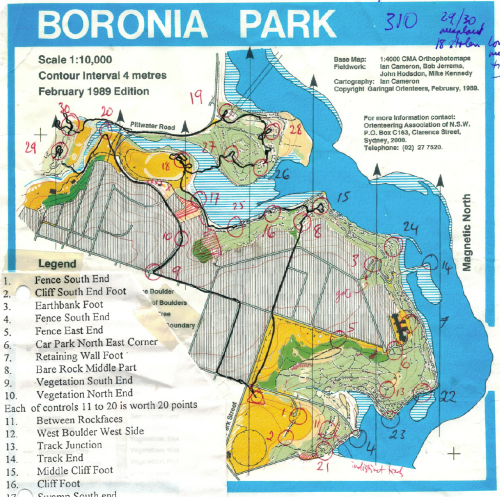
SH: The Newcastle Street Series started in 1990. Arthur Kingsland won the first series and several later series and he still competes each year. Club members of all levels take part and the street series has always been aimed at bringing new people in to try orienteering. A lot of Novocastrian rogainers have been attending the NSS for many years including Andrew & Nicole Haigh, Rob & Marg Cook, Van Netten family, Charlton family, Montgomery family, Ian Dempsey, Bob Gilbert, Neil Chappell and many more.
The trophy for outright winner is a 4kg+ lump of bitumen (see below photo of Andrew holding this trophy).
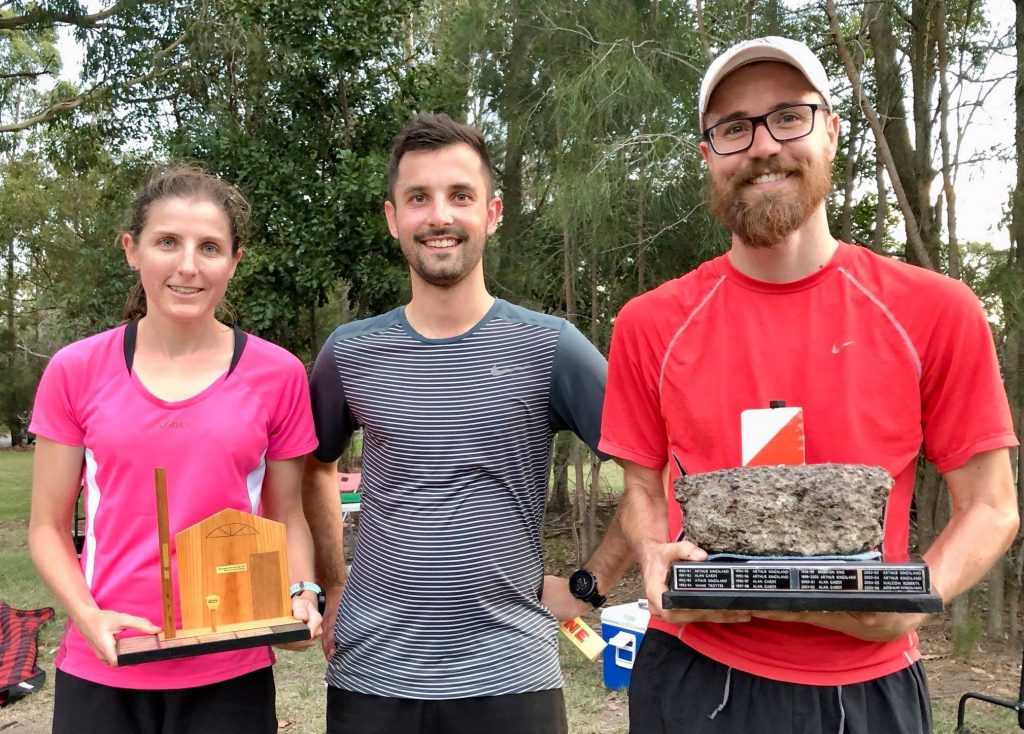
TW: What gave you the idea to start up the SSS, and what type of people came to the events back then?
RB: Big Foot had an event before I started, and I think there were earlier series’ that had faded out. Maybe I was just the right person at the right time – and 30 years later wondering, “Gee, what happened here?” Most of our early runners were all O club members, but then we started getting non-O athletes. Some fantastic runners have joined us over the years, though nowadays many names in both O and rogaining join the party, less the straight road-running crowd.
TW: You have set and done longer rogaines in the past. How can participation in summer-series events complement one’s performance in longer rogaines?
RB: Ron Junghans and I set the Paddy at Long Swamp (2001 – same location as the more recent “Pagoda Palooza”), and we were both pretty keen then. I’d always go out hard, Ron trailing back, but he always perked up at the 4-5 hour mark, often finishing the stronger. My rogaines with Ian McKenzie (both of us walking at fast pace) have been highlights also. The key link across the two map-sports is distance estimation, and the need for late plan adjustments as one tires. Both sports are defined by these features.
SH: NSS events are like mini-rogaines; controls have differing point values and you try to get the most points you can within the 45-min time limit. This is great to hone time-management skills, navigation under pressure and route planning to maximise points.
TW: How do Summer Series events contrast to other conventional orienteering events, and what makes them particularly ideal for rogainers?
RB: SSS are ’score’ courses, where you can (normally) study the map and course. The biggest difference to classic bush and sprint orienteering is that these are ‘line’ courses with no prior study. The key to good O setting is route choice and making decisions in very short time order. Orienteering in that sense is a more charged and athletic activity, where decisions on the run are often so critical and such a key aspect. Orienteering’s event times (being shorter) are a major contrast to rogaining, so SSS is perhaps a good cross over.
SH: NSS are ‘score’ courses (like rogaines) instead of traditional ‘line’ courses and are set in suburban areas with some reserves and occasional bush sections. Most competitors don’t use a compass as it’s more time consuming and they just keep track mentally. These events can be enjoyed at any speed by all ages and abilities, just like rogaines. NSS also has a walking-only category and a pram category (running with pram allowed) and you can compete by yourself or in a group. Children under 12 must be accompanied by an adult for safety.
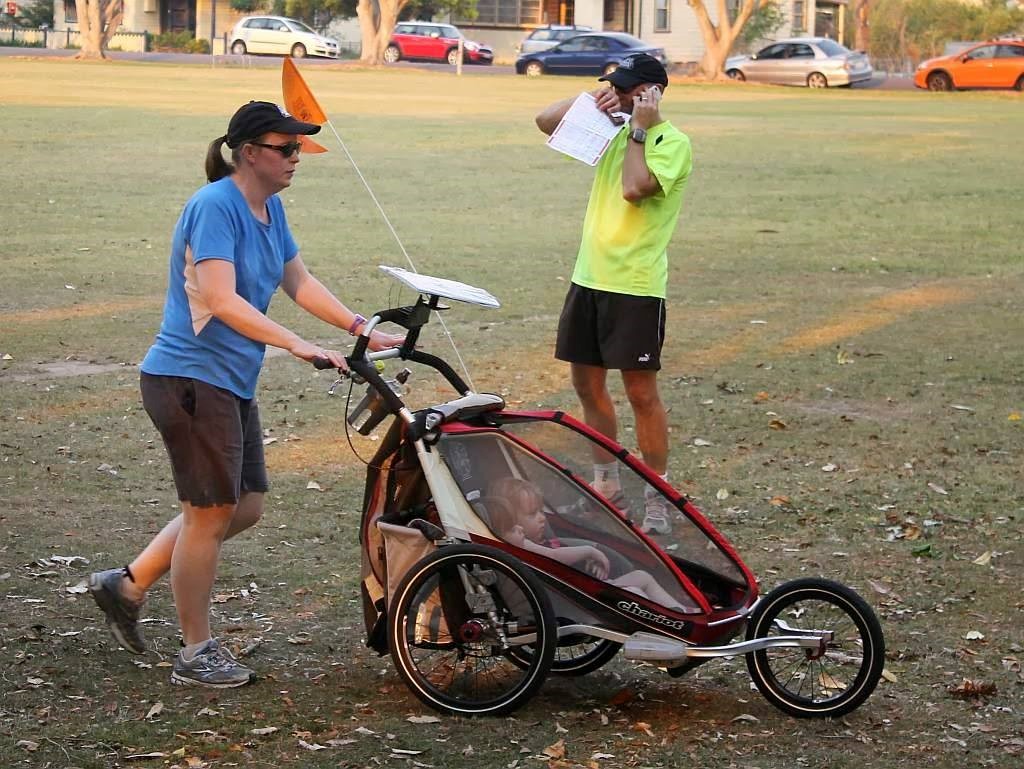
TW: Do you have any particular favourite courses/maps/locations or events over the years
RB: No real favourites. The location variety is one of our best features, ranging from the bush of Lane Cove, Curl Curl, Tania Park and Kissing Point. So many – and three new maps this season! I suppose I’m a little bit keen on the inner West having mapped Pyrmont, Glebe, Annandale etc. They also hint at Sprint O to a degree, something I’m very very keen on.
SH: I too like the variation within the series – some maps are flat and some very hilly, some are grid-like (where you can easily make parallel errors) and others are curvy mazes. I prefer maps with lots of complexity and not too many steep hills. We have so many maps that we usually don’t repeat a map for three years.
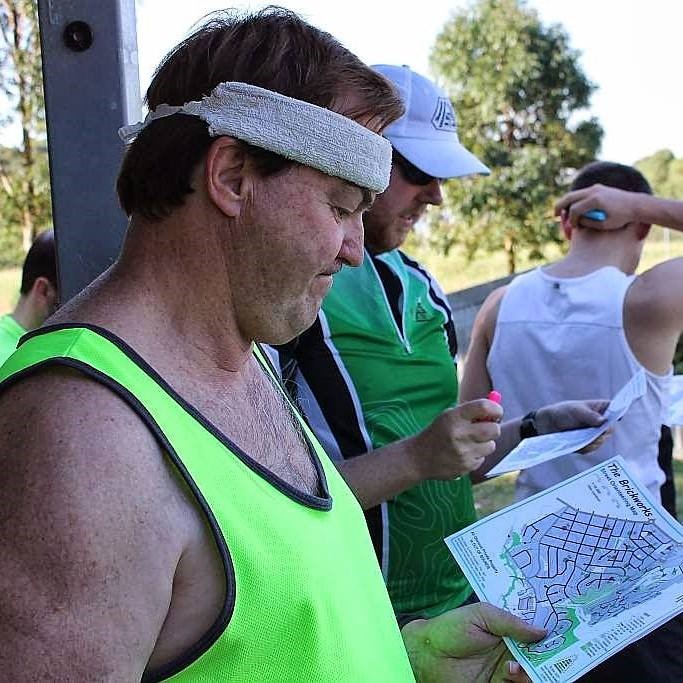
TW: What is going to be different this series to reflect the Covid era?
RB: The Covid protocols mean we will pre-publish the courses (night before) to assist in minimising people mingling at assembly to study the route. Sadly, this was always one of the best aspects of our weekly ‘hit’ … getting to catch up with your mates, now pre-done, or back in your car. So, minimal people at rego. No results display etc. It will make the SSS Facebook page all the more important as a forum for athletes to spend hours comparing their routes to that of their mates!
SH: MapRun should help with faster times as there are no longer questions to answer at a control. Because it will now be GPS, we will be able to easily check a competitor’s route if a control doesn’t ‘beep’ and amend their score. Also, all competitors will have to physically pass through each control instead of turning around early (if they had good eyesight at a distance) and they will not be able to cheat by guessing answers or taking shortcuts through Out-of-bounds areas.
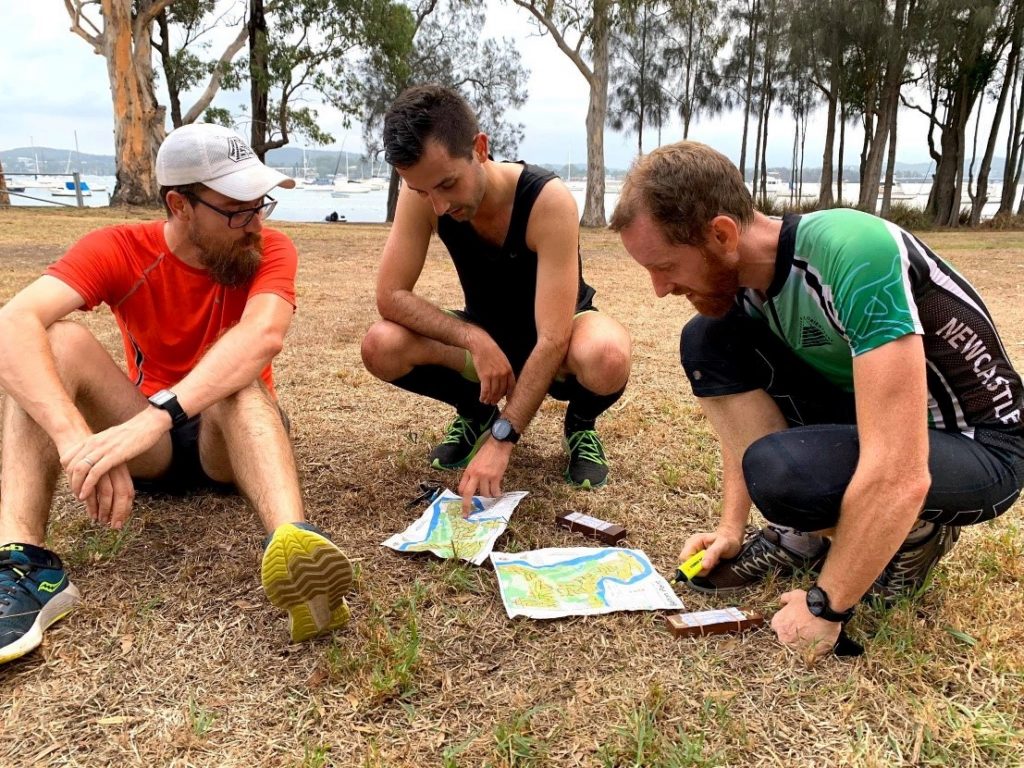
TW: What in particular is there to look forward to this season?
RB: This year’s programme begins with the two cancelled events from Season 29 including my ‘Gone Trotting’ at Harold Park, Glebe. Both with new material. I mentioned the new maps (Auburn – dead flat, Earlwood, the full Northbridge which I’ve called ‘Remembering Bob Hawke’! and one behind Warringah Mall). Your (Tristan’s, held on December 2nd) one in North Wahroonga will be a cracker, as will Richard Pattison at ’The Cascades’ which hasn’t been used for over 25 years. Also Ian Jessup at Long Reef, another oldie getting a rerun in the sun. And don’t forget the 30th anniversary event – back with special permission at Balls Head where it all began.
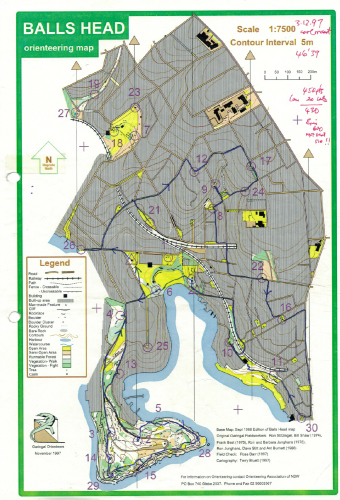
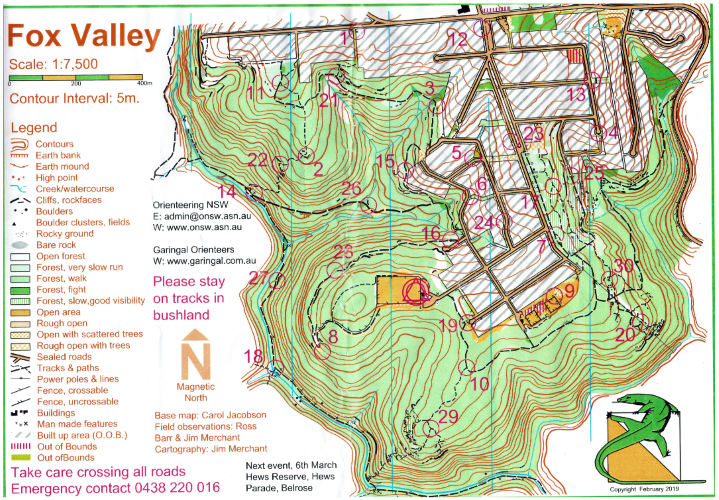
TW: Thanks Sam & Ross for the info and obvious enthusiasm you have for the Summer Series. And for our readers, here’s links to other Score Orienteering comps in NSW & ACT.
